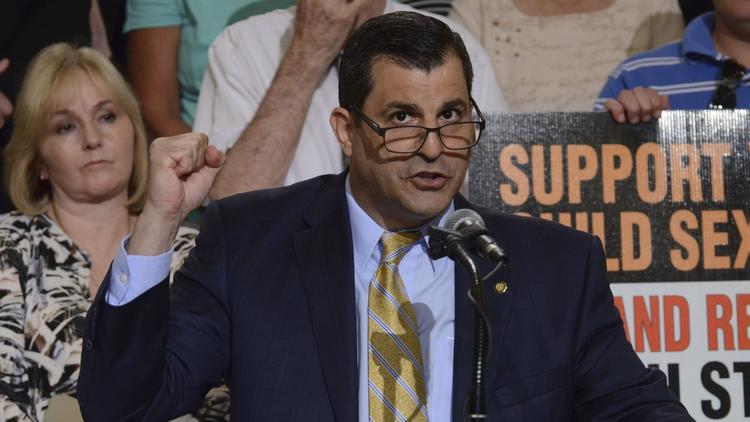|
Pennsylvania priest sex abuse victims get their stories heard
By Tim Darragh
[with video] Victims of sexual abuse by priests in dioceses throughout Pennsylvania have been waiting years, if not decades, for the day when they could believe their stories were told and heard. That day is today. The Pennsylvania Supreme Court set 2 p.m. as the deadline for a special master to release a grand jury report detailing decades of priests’ sexual misconduct with minors in six of Pennsylvania’s eight dioceses, including Allentown. More than 300 “predator” priests are expected to be identified in the report, which would make it one of the largest single collections of church sex abuse worldwide. Victims on Monday expressed relief that the report, two years in the making and held up another six weeks by legal maneuvering, will finally become a public record. They also hope it’s more than a recitation of names of known and alleged perpetrators, but also a critical look at the forces inside and outside the church that allowed so many abusers to continue their assaults for so long. “To this day, I wonder how many kids would not have been hurt by the priest who abused me, if they hadn’t just moved him around,” said David Cerulli, a former Allentown resident who said he was molested in 1964, when he was an altar server at St. Francis of Assisi Church. Cerulli, 68, was among the earlier victims to go public with his account, alleging he was molested by the Rev. John Paul Sabas. Cerulli sued the diocese in 1989 when he learned Sabas was still in ministry. Sabas died in 1996. Now, Cerulli hopes the report will explain the common practice of moving priests to different parishes once someone made an accusation. “Was there ever an effort to change that policy at all?” he asked. Among the bits and pieces of the report that have made it into the public record are likely answers to that question. In one of the limited number of court records made public, state Attorney General Josh Shapiro’s office cited the report directly: Victims’ pleas for help “were “brushed aside, in every part of the state, by church leaders who preferred to protect the abusers and their institution above all.” The “main thing was not to help children, but to avoid ‘scandal,’” the report says. “Priests were raping little boys and girls and the men of God who were responsible for them not only did nothing: they hid it all.” State Rep. Mark Rozzi, D-Berks, who says he was molested by the late Rev. Edward Graff, said the report must expose coverups by bishops and their aides. “I’m looking at this like the real scandal isn’t that the abuse happened,” Rozzi said. “It’s that the abuse was aided and abetted by the hierarchy who chose to protect its reputation and the money rather than the children.” It remains to be seen if individual bishops will be named in the report. The Allentown Diocese has had five bishops, with Bishops Joseph McShea and Thomas Welsh leading the diocese during the period when most of the known sexual abuse cases occurred. The diocese plans to publish the names of clergymen credibly accused when the grand jury report is released Tuesday. The grand jury investigation also covered the Erie, Greensburg, Harrisburg, Pittsburgh and Scranton dioceses. Earlier grand juries probed abuse in the Archdiocese of Philadelphia and the Altoona-Johnstown Diocese, meaning all of Pennsylvania’s Catholic dioceses have been investigated. Rozzi said he hopes public pressure following the publication of the report will force state legislators to eliminate the statute of limitations for sex abuse victims, who often take years or decades to acknowledge their abuse. He also wants to open a two-year window for victims who are time-barred by the statute of limitations to file lawsuits. Publication of the grand jury’s findings will not be the last word on the report. Legal challenges by individuals named but not charged with a crime led to the Supreme Court’s decision to have their names redacted at least temporarily. The court will hear oral arguments from 11 of those challengers, with Shapiro’s office arguing for publicizing their names, on Sept. 26 in Philadelphia. Contact: tdarragh@mcall.com
|
.
Any original material on these pages is copyright © BishopAccountability.org 2004. Reproduce freely with attribution.

